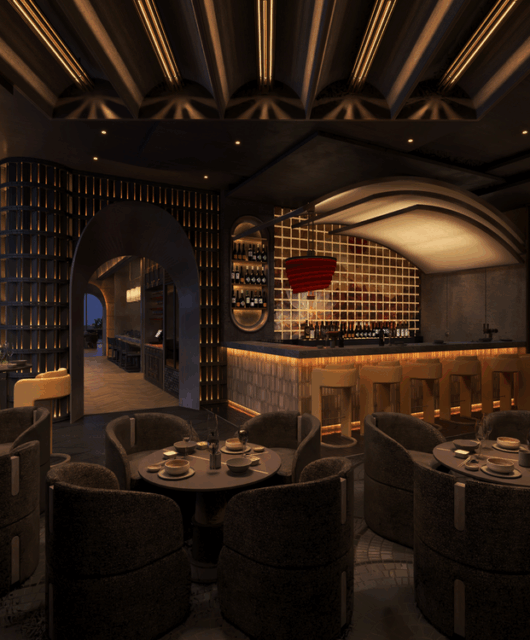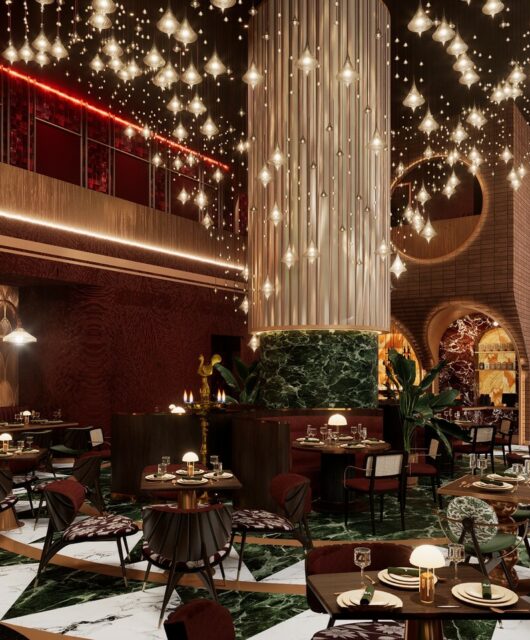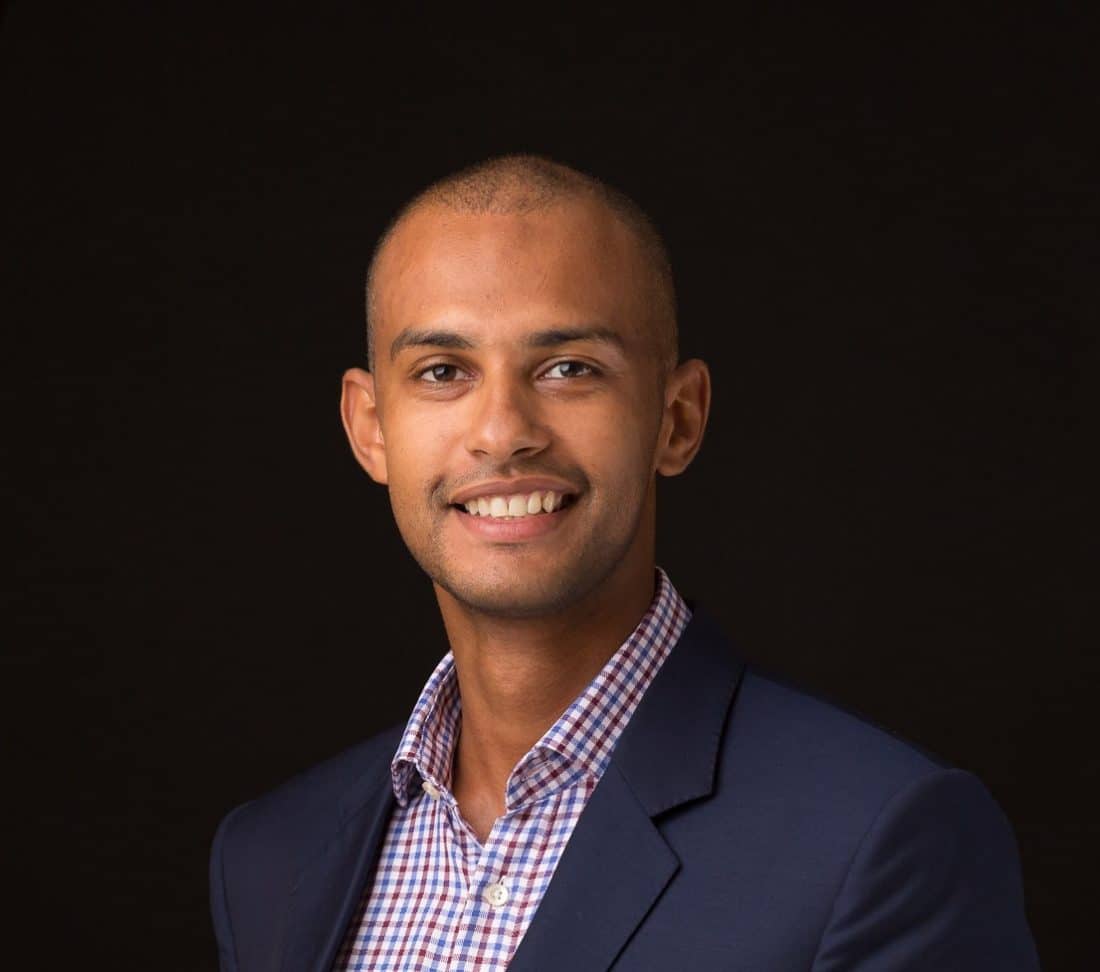
How has your product design education helped you in your current career?
For starters, it’s given me an understanding of the technical side of product design, and the design process too. When it comes to strategising with our regional and global partners, having a clear sense of how our products work and what it takes to make them has been key. It also means I can be a conduit between our product designers and the clients we work with – because I can speak both ‘languages.’
Product designers learn to constantly reference the user, going back to the user experience and how it has to inform the design for every product. At MillerKnoll, human-centered design is at the heart of what we do and why we do it – it applies to our own people as well as our customers. Having this well-honed sense of what people want and why they want it has come in handy, whether we’re considering whether a product will meet the needs of regional users, or making sure our own people are fulfilled and engaged at work.
Furthermore, product design is all about problem solving. Being solution-oriented, rather than getting caught up in the problems themselves, has been critical to MillerKnoll’s adaptability.
How would you describe today’s workplace, and what has changed since the rollout of COVID-19 restrictions?
At MillerKnoll, we’ve been predicting a shift towards hybrid work since long before the pandemic, and that’s really what we’re seeing now. The most successful organisations are those that are adopting a workplace model that meets the needs of workers, wherever they are – whether that’s in the office, moving between home and office, or working remotely full-time.
How do you keep people connected when they’re working anywhere and everywhere? Technology is key, and we’re increasingly seeing meeting rooms with video conferencing facilities built in, so that teams – and their clients – can meet up, no matter whether they’re in the office or elsewhere.
Spaces that enable in-person connection are vital in the modern office. The restrictions of the last two years really highlighted the human need for connection – and that’s something the workplace can offer that working from home can’t. What we’re seeing is a move towards spaces that foster that connection, and collaboration; from more informal lounge areas to larger spaces that can work for team collaborations, meetings, presentations, networking events.
This is exactly what we have done within our new space. Our new space serves multiple purposes. If there’s one thing the pandemic taught us, it’s that workplaces have to be adaptable, so that you can activate social distancing measures if you need to, or change configurations if you take on more staff or have to reduce the number of people on the office floor. So there’s a big shift in offices towards spaces that can be divided via screens and sliding doors, or opened up if you’re hosting a large event. We’re seeing growing demand for mobile, modular furniture that can be reconfigured quickly to adapt to constantly changing office needs. And that need is only going to keep growing.
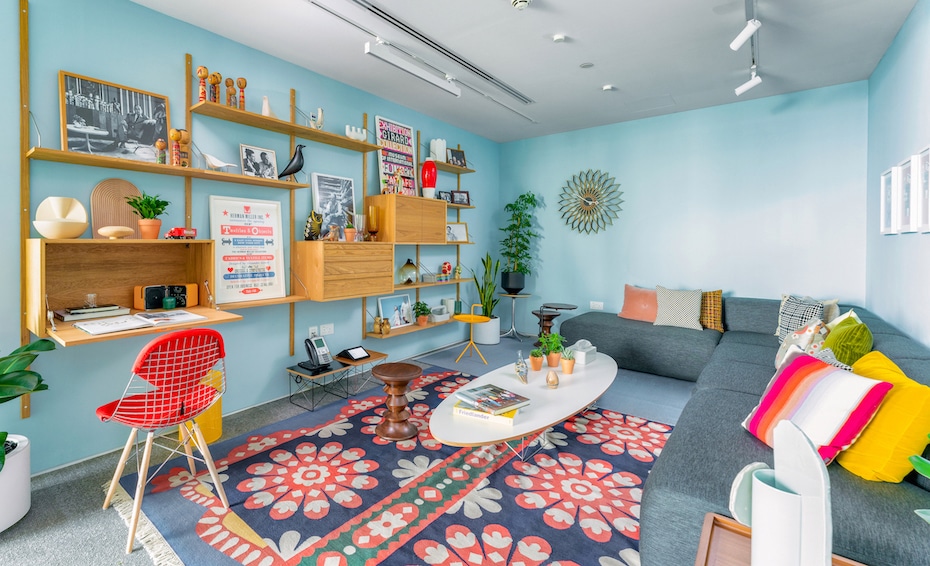
As part of MillerKnoll, Herman Miller has a design heritage that spans more than a century. That design legacy was really enforced when we acquired Knoll last year. The combined legacies of these two pillars of the design industry make MillerKnoll a unique player in the industry. We now have a broad range of dynamic brands in our portfolio, unparalleled know-how, and global reach.
Could you please take us on a tour of the newly redesigned Herman Miller showroom in Marina Plaza? What are the highlights of this space?
Our new Dubai showroom is a living example of our outlook on the work environment and where it’s going. It’s a showroom and office in one, with space for employees, dealers, customers and the design community to come together, and to explore different ways of working and interacting – with each other, and with products from across the whole MillerKnoll family.
The showroom is zoned into different settings, starting with the reception when you first come in, which is the dynamic ‘heart’ of the office. It features a variety of lounge seating options, encouraging everything from informal conversations and meetings to individual and group work. There are also focus work zones – the Agile Workshop for example, is located right next to the reception, so people can move easily between conversations and individual work. We’ve also incorporated a variety of work points throughout the showroom, all using different Herman Miller products to create a unique experience for the user.
Another area that stands out is the OE1 workspace collection, OE1 is a collection of optimised, essential pieces for a new era in the workplace. It is designed to help people experiment with space, discover what works in the moment, and change rapidly for the future. The idea is to create a space that people can use however they want and need to in that moment. In the larger meeting spaces – our event space, which is primed for presentations and collaborations – we’ve included a range of different products to support different postures.
In the healthcare space, visitors can actually experience our healthcare products in situ, touching them, sitting on them. We’ve also incorporated a new seating experience where visitors can come and try our chairs for themselves.
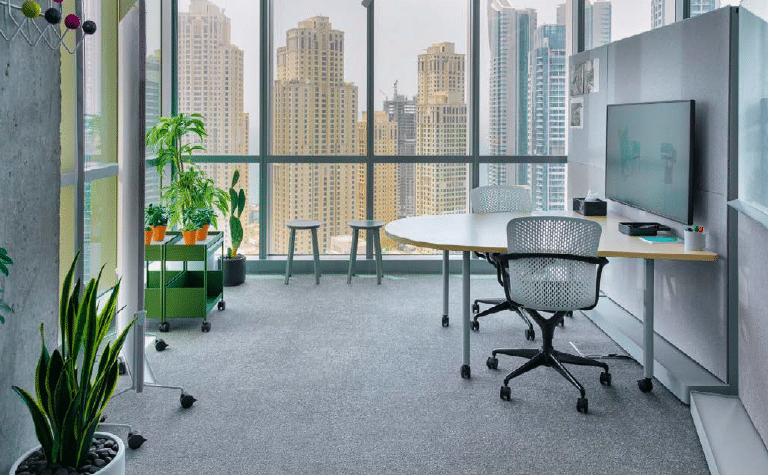
The whole space is welcoming, vibrant and light, and the flow from one space to another feels intuitive and natural. I love coming to the office as a result, and I’ve noticed that my team does too. We genuinely want to spend time here.
What are the standout Herman Miller products that you highly recommend in light of the pandemic and wellness being more important than ever?
As I said above, the pandemic has really shown us how quickly change can happen. Offices need to be ready to pivot quickly – and this is where flexible furniture makes all the difference. We designed our OE1 Workspace Collection with this in mind, and that’s why it’s top of my list. It consists of a range of essential pieces – trolleys, storage units, tables, easels, agile walls – all of which are mobile and designed to adapt to organisational needs.
To support wellness in the workplace, I’d also recommend sit-to-stand desks like Atlas Office Landscape and Ratio. The research really shows how important it is to move throughout the workday and to change postures, and also how bad sitting for long periods of time is for our health. These products make it easy to shift between sitting and standing, and they’re also primed for change. Atlas works in a whole host of configurations, so you can change the set-up as team sizes shrink or grow.
A good sit is also really important, not only in the office, but also when working from home. Using an ergonomic chair like Cosm, Aeron or Sayl will support postural health. If people are more comfortable when they work, they are more likely to do their best work, and to feel good while they’re doing it.
How vital is technology to the overall success of your innovative products and brand?
Technology is extremely relevant to how we work, and the products we create. We walk our talk – and that means that our teams follow a hybrid working model, working both in the office and remotely. They have to be able to connect both in person and digitally via video conferencing software.
Technology is also vital to our product design process. We use digitally derived data to help us problem-solve, and we use technology in the prototyping process. We use it to build 3D models, and to build our prototypes using 3D printers, and we keep prototyping until we get our products exactly right.
That said, technology goes hand in hand with human emotion, and the human experience. It requires a human hand and a human mind to solve human problems, and to create products people will truly engage with.

At Herman Miller, it’s our view that ergonomic furniture will be commonplace in every office in the next five to 10 years. Organisations are waking up to the fact that the health of their people is paramount. If people are physically healthy – not to mention mentally and emotionally healthy – they’re more likely to be happy and engaged in what they do. That feeds through to healthy overall company performance, and healthy profit margins.
There’s a global talent struggle underway, too; especially post-pandemic, with so many people choosing to change how they work and who they work for. The organisations that last the distance will be those that attract and retain the right talent by giving them everything they need to work at their best. And that includes ergonomic furniture that makes them feel comfortable, and that supports their health.
How would you describe the roadmap for your brand over the coming years?
We believe in designing for people, and inspiring them to do great things. We believe in designing for the good of humankind, and that will be a key element of our roadmap moving forward.
Internationally and regionally, we’ll continue to pursue our DEI (diversity, equity and inclusion) and social responsibility goals, creating opportunity for everyone and doing our part for the planet and its people.
Globally, we will keep looking for ways to be more sustainable in every aspect of what we do – from our facilities and how we make our products through to the materials we use and the shipping process. We’re currently working with our suppliers and incentivising them to reduce their carbon footprint so we can minimise the carbon footprint of our products. The acquisition of Knoll really supports this, because it gives us a global footprint, and the capacity to meet our customers wherever they are.
In the Middle East and Africa, it’s our goal to bring Knoll together with Herman Miller, and to keep building these brands here. Herman Miller has had a presence here for over 30 years, and offices here since 1999, so we’ve reached some significant milestones. We plan on continuing that trajectory with growth in the commercial, healthcare, hospitality and education sectors. We’ve already surpassed our growth expectations in Saudi Arabia and we expect that trend to continue there and across the African continent, too.
Connection is really important to us, so we will continue to deepen our engagement with the MEA design community, sharing new tools with them, research and giving them greater access to our brands.

